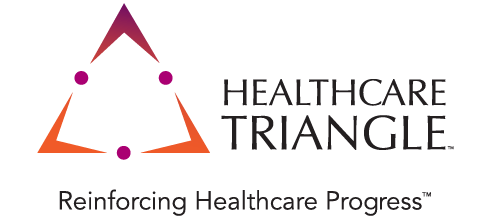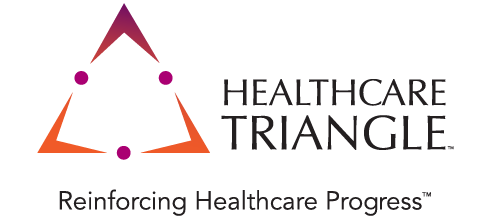Revenue Cycle Automation & Efficiency
Healthcare Triangle
Jul 16, 2020

This is the last component in my #returntorevenue series, highlighting the steps necessary to expeditiously trend up your financial health in light of COVID-19. This final step is arguably the most important. You can take all the right strategic and operational steps in the world but if your technology, your EHR, your core revenue processing mechanisms and staff aren’t aligned, you’ll inevitably see and experience subpar results. The simple fact is, there are things you should have done yesterday, things you should be doing right now, and things you’ll need to continue to do, monitor, and improve in the future.
What are these things then you ask? Alright, let’s dive right in, there’s a lot to cover and a lot at stake.
Story #1: I used to do large scale Epic implementations. Specifically leading efforts to integrate point of care clinical charge capture with the Hospital and Professional revenue cycle modules. You’d think it would be pretty straightforward, put the charges in place, show the clinicians how to do it, and convince them that it is in their own best interest to take on these new “billing” responsibilities. But it was anything but. The charges get hooked up and put in place but not always consistently. Clinicians don’t know what charges are automated and what they are supposed to “remember” to post manually. The lists they pick from are different in different circumstances and so don’t always have what they need, charges get missed, or the wrong ones get entered. Just about everyone everywhere now has transitioned to this sort of approach to clinical charge entry, but few have set it up to ensure success. Manual charges staff have to “remember” to add should be the exception not the rule. Charges automatically posted from orders and documentation should be the norm, but system redundancies and complicating factors need to be thoroughly and regularly evaluated, with intelligent configuration logic to support. If you don’t believe it’s that important, just take a look at your gross patient service revenue and determine what 3-5% of it is. That’s the amount most entities miss out on due to a variety of the factors mentioned.
Story #2: I’ve done a number of large revenue cycle and system integration assessments. It’s inevitable to run into the issues mentioned above. But there’s always more, and this example will highlight subpar system setup/integration and the impacts it can have on the mid revenue cycle and corresponding financial impacts. Last year I did one of these such assessments for a client, interviewing and observing staff as they worked, cataloguing their feedback, issues, and frustrations, and performing EHR root cause analysis. The findings were incredible. Issues were identified with basic Provider setup – incorrect NPIs #s, missing bill areas & authorized service locations, errant specialty taxonomy code listings, and more. Old charge codes and outdated pick lists were still in place and being used. Nobody had a clue, and the revenue cycle leadership team was baffled how these sort of problems could even occur. It shouldn’t have been a major surprise though. They were already drowning, staff couldn’t keep up with the volume of work needed even to meet timely filing deadlines for large swaths of revenue. And while the volume of work and revenue to move piled up, there were also disconnects all over…provider credentialing delays, crucial information not passing between clinical operations, revenue cycle resources, and Epic team-members. Nothing was getting tracked and managed with any proper oversight. It’s no wonder all sorts of problems and revenue loss was ultimately found. Well organized organizations have checks and balances and logical stopgaps in place within the EHR, their other financial systems, and within their global revenue integrity operations to assure all of these factors (and more) get addressed properly. Something inevitably falls through the cracks every once in a while, but just imagine the extent of financial impact for organizations like this one that routinely are losing revenue for dozens and dozens of individual issues like these. It adds up very quickly, and for large hospital organizations, it means a TON of money out the door and never to be recovered. If you’re a revenue cycle lead who wants a instant leap forward in your career, addressing and mitigating all of these little individual impacts that nobody is paying attention to will make you an instant hero. Believe me, CFOs and CEOs may have bigger picture items and considerations on their mind, but they care. They scream (in both agony and joy) when presented with details of how much revenue is going by the wayside and what can be done to prevent it moving forward.
Story #3: This one is about the people. And it isn’t so much a story as it is an aggregation of observations and experiences. I’ve worked side by side throughout my career with folks spanning from back-office billers to CEOs, and what I can definitively tell you is that when it comes to revenue success, the titles people hold make very little difference. I’ve worked with Revenue Cycle VPs who’ve done little more than collect big paychecks and take up space in the office. I’ve worked with front desk staff and clinical managers who have no formal revenue responsibilities but who have saved their organizations hundreds of thousands of dollars through extra hours and efforts, attention to detail, and a critical awareness they put into their work every day. I’ve seen Epic HB and PB analysts execute requests without any vetting or thought whatsoever. Is this a good idea? What are the impacts? What else may be affected by the circumstances? And I’ve also seen absolutely phenomenal IT resources (both FTE and consultants) going above and beyond, analyzing and improving the state of the system and revenue at large, at levels far beyond what their position and title reflects. Intelligent systems and IT configuration is crucial to revenue management, but so are the people you have working within that realm. You want good people here, at all levels. The critical thinkers, the ones who care, the ones who put in the extra work and hours to make things better. Yet how often do revenue cycle directors simply ask for bigger budgets and more staff, just to use them for brute force work, manually coding charts, or pushing revenue through the system where there are barriers? That’s not the way to improve financial health, at least not for long.
The major point is this: your EHR and related technology mechanisms serve a clear purpose, and you should use them for that at which they excel - taking in surrounding information, a certain charge code, from documentation of a certain type, done within a specific visit context, and with specific insurance/payer circumstances associated, processing through algorithms and churning out results. Your people need to be used for the skills they bring as well, the true human side of the equation, the critical thinking and analysis to determine how efficiently and effectively the computerized tasks and configurations are actually working. And to iteratively improve over time. Not just to do the work that is left over. If anything, we should be needing fewer and fewer resources over time, not more and more. Revenue improvement is about working smarter not harder.
I’ll end with a starting list of items to consider regularly in order to achieve best practice execution from your system and staff alike. Most of them are straight forward items anyone can execute.
- 1. Automate every charge possible within your EHR.
- 2. Create tangible checkpoints and stopgaps for all revenue impacting considerations.
- 3. Maintain a detailed revenue cycle listing of all these checkpoints and potentially impediments, and assign staff to manage and review them routinely
- 4. Configure rules to evaluate discrepancies between professional and technical fees and statistics
- 5. Automate payer-specific considerations and factors
- 6. Maintain and manage payer contracts in the system
- 7. Regularly maintain and organize insurance plans in your systems
- 8. Implement real time eligibility and real time authorizations
- 9. Complete a basic CDM code review and targeted audits every year
- 10. Provide performance dashboards and revenue visibility to all key stakeholders
- 11. Incorporate real time pricing alerts and mechanisms to suggest cost-effective alternative solutions
Assess, improve, monitor. Repeat. That is the pattern and the goal you need to achieve. Alignment of staff to the technology mechanisms in place and revenue factors that can be positively impacted through action is at this point imperative for the state of financial healthcare operations. There’s a mountain of opportunity within the space, and with so much needing to happen to ensure your organization is operating smoothly, it can be overwhelming at times. But technology should be a crutch for you to lean on, not a burden to overcome. Likewise, your staff should be some of the most important and effective assets you have.
Best of luck in these crazy times we live in. If a conversation will help at any point in your considerations for returning to a state of revenue success, let me know. This step and some of the specific considerations raised within may prove critical as you look toward the future and in confidently and proactively return to a state of increased clinical production and financial health.


